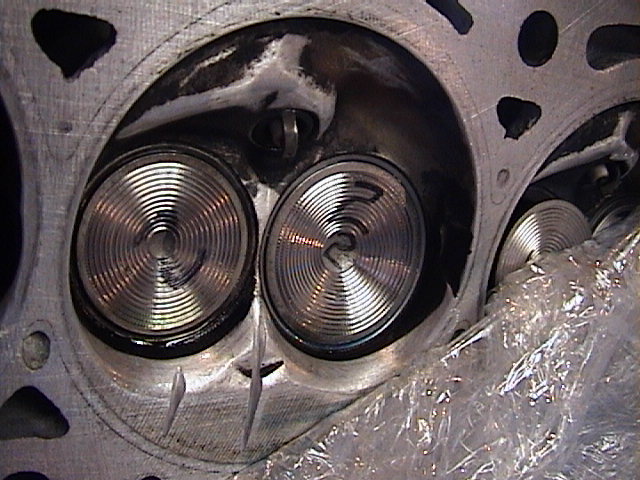If you want to continue using your little 350 as a highway ride, you may want to consider upgrading certain components to help the engine resist detonation.
Everything that kghost said is true, no matter the engine you're working on. One thing that is especially important is getting the air/fuel mixture that is in the chamber as homogeneous as possible. There are a few "tricks" that have been developed since these engines were made, many of which aren't very well known.
Two things I recommend: MetricMechanic's Surface Turbulence valves and Mike Holler's PowreLynz.
Surface Turbulence Valves:
 http://www.metricmechanic.com/pdfs/M3_Engine.pdfBefore you say something like "That may work with car engines but it won't work with our old motorcycle engines," do a little research. I know that this particular picture is of a completely different combustion chamber (utilizes squish/quench and Singh Grooves) but the effect is the same regardless of the chamber shape. The ST Valves help mix the air/fuel before it gets into the chamber.
http://www.metricmechanic.com/pdfs/M3_Engine.pdfBefore you say something like "That may work with car engines but it won't work with our old motorcycle engines," do a little research. I know that this particular picture is of a completely different combustion chamber (utilizes squish/quench and Singh Grooves) but the effect is the same regardless of the chamber shape. The ST Valves help mix the air/fuel before it gets into the chamber.The back side of the valves look the same. They will increase low-lift flow by about 10% and full lift flow by about 4%. They also aid in vaporising and mixing the fuel into the air charge.
PowreLynz:
 http://powrehaus.com/2006/10/30/powre-lynz/
http://powrehaus.com/2006/10/30/powre-lynz/In fluidynamics, as an aerosol travels through a conduit, the gasseous elements will hug the center while the liquid elements will drop to the boundary layer. Restated, as an air fuel charge travels through the cylinder head, the air and vaporized gasoline will hug the center of the port while the liquids will collect and puddle against the port walls.
By adding “screw threads” to the intake port walls, we are able to better vaporize the fuel through a couple of means:
- Increase boundary layer turbulence to excite the liquids and discourage puddling and condensing.
- Increase the surface area of the hot port wall allowing increased exposure to the liquid fuel.
- Create a “wick effect” where the screw threads will temporarily hold the liquid fuel and allow it to vaporize off into the higher velocity air stream.
- As a large fuel droplet bounces off the serraded walls, it will break into a dozen smaller, more readily vaporizable droplets.
- Promotes laminar flow outwardly, increasing the surface area of the fuel allowing it to vaporize more readily.
Realize that these mods won't cover up the problem you're having with your carbs. They're not meant as "band aids" to cover up more serious fuel problems. That being said, they
greatly reduce detonation in an "overworked" engine such as yours.